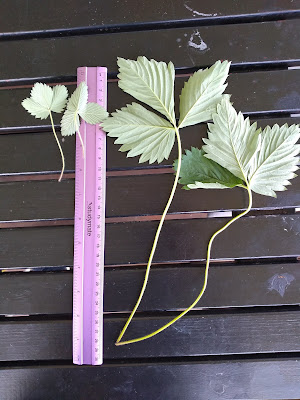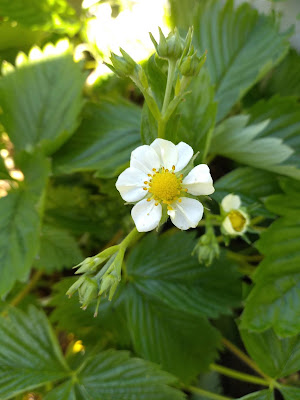Drosera capensis was the first carnivorous plant that I ever grew successfully. I got my first plant when I was a school student, I tended it and fussed over it and despite all my well meaning yet poor gardening it survived for years. They are really quite forgiving and surprisingly simple to grow, yet can also reach a rather impressive size. From that original plant I learned a lot.
I stopped growing carnivorous plants for some years, and have started to grow them again. I am loving growing these again and am slowly building up a nice little collection.
Among the carnivorous plants I grow I have some D capensis. I grow most outside where they thrive, and I have a few on my kitchen window sill.
 |
| Drosera capensis sending up a flower stalk |
I am always amazed at the large number of insects that the sundews catch. Each leaf is often covered in its prey, often dozens of insects are trapped on each leaf. I am really surprised at how many mosquitoes they catch, especially inside my house! I don't know why they catch so many mosquitoes, they really shouldn't be all that attractive to mosquitoes at all, but I am glad that they do catch them.
My capensis are flowering nicely at the moment so I thought I would write a post to show what these look like.
 |
| Drosera capensis flowers |
Above you can see three flower scapes. The one on the far left is from the typical form, this is the form I originally grew and it is rather pretty. In the middle is 'alba' which is anthocyanin free and a strong grower. On the far right is also alba, but it has leaves and plantlets on the end of the flower stalk.
 |
| Drosera capensis 'typical' flower |
 |
| Drosera capensis 'alba' flower |
Above is the flower stalk from capensis alba. These plants are anthocyanin free. The flowers are white and the tentacles on the leaves are green/white. These tend to be very vigorous growing plants that get large pretty fast. Again they produce huge numbers of tiny seeds with high germination rates.
 |
| Drosera capensis with plantlets growing on the flower stalk |
I have never seen Drosera capensis grow leaves or plantlets growing on capensis flower stalks before. I am told it is not overly uncommon, and I believe it may be caused by environmental factors rather than anything genetic. I kind of like it, and being able to break off the little plantlets and grow them is fun, so it is too bad that this is not a genetic trait.
When I have extra sundews for sale I list them through my for sale page. I prefer people to pick up these plants but I can post them much the same as I post perennial vegetables. Sundews sulk a little after postage, and they often lose all of their 'dew', but they tend to survive and grow really well after they have had some time to get established.






















































